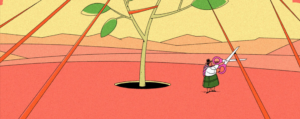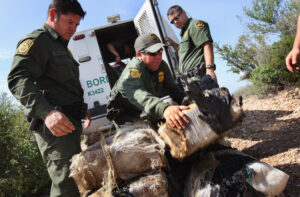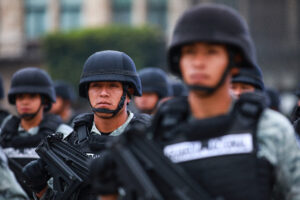By: Gimena Sanchez-Garzoli and Adam Schaffer*
Increasingly, Afro-Colombian communities are bearing the brunt of the U.S.-financed aerial fumigation efforts in Colombia. In 2011 and 2012, fumigations took place in the departments of Nariño, Valle del Cauca, and Choco—regions populated primarily by Afro-Colombians. The fumigations join the wealth of mining, industrial, and development projects that regularly violate these communities’ right to free, prior, and informed consultation regarding actions taken on their lands.
Aerial fumigation of coca crops is conducted with the chemical glyphosate—marketed in the United States as Roundup. Conclusive findings on glyphosate’s long-term safety remain elusive; while some studies have found that the chemical harbors no carcinogenic qualities, the United Nations argues that adverse health effects—specifically for children—are an undeniable possibility.[i] Extensive anecdotal evidence from sprayed communities continues to raise legitimate concerns as to the chemical’s safety. Reports from Afro-Colombian community groups indicate widespread skin, respiratory, and gastrointestinal issues on locals after fumigations take place.[ii] Worst affected are pregnant women, the elderly and children.
Equally troubling is the damage to Afro-Colombians’ food security and the environmental effects of spraying. Imprecision in spraying campaigns has led to the killing of non-coca crops used for sale and consumption, including banana, yucca, corn, and rice fields. [iii] Such crops provide basic food security for many of the communities sprayed, and once destroyed, can prompt displacement of rural farmers. In June and September 2012, the over 6,000 inhabitants of La Mamuncia-Lopez de Micay in Cauca’s daily food items were destroyed, along with a cacao project supported by the Cauca government that served as this community’s main source of income.
Furthermore, as the chemical spray seeps into streams and aquifers, its harmful impact further damages humans and the environment. Studies show that glyphosate has a negative effect on aquatic life and biological diversity. Poisoning of Afro-Colombian communities’ main water sources remains a major concern. In other words, however “targeted” or “harmless” aerial eradication programs may be in theory, the collateral damage of spraying is staggering and this damage is highly destructive to Afro-Colombian rural communities.
Much of this environmental damage cannot simply be reversed. Colombia’s Pacific coast is one of the world’s most biodiverse regions. Choco, for example, is home to virgin forests containing species of flora and fauna that do not exist anywhere else. Errant spraying does not merely eliminate theses species from existence in Colombia; rather, it drives them into global extinction.[iv] Such damage to the natural environment is leading to irreparable harm to Afro-Colombians’ rich culture and traditional rural way of life.
The aerial fumigation efforts also deepen Colombia’s already significant internally displaced population. Vulnerable communities—notably Afro-Colombian and indigenous peoples—are regularly forced off their land due to threats, violence, and the internal armed conflict. Under the constant threat of—even licit—crop destruction through spraying and related violence between drug traffickers and the state, these groups are regularly forced to leave their ancestral lands and seek safer havens.
In 2000, the Afro-Colombian Assembly of the Community Council of Yurumanguí (Valle del Cauca) launched an anti-coca campaign in order to stop the harm, both the crops and the fumigations were causing on the locals. The leaders cognizant that coca and fumigation efforts were incentivizing displacement from the community, destroying food crops, eroding security, and posing a serious threat to their cultural integrity organized themselves to defend their land, cultural, and political rights. The strategy involves identifying areas where coca is grown, approaching the growers to explain the coca’s ties to violence and ask that the illicit crops be destroyed. If the grower does not acquiesce the community organizes a group of persons to eradicate the plants themselves. Though this effort lacks official support and has increased tensions with guerillas and coca growers, it serves as an example of the alternative community-based responses to aerial fumigation proposed by Afro-Colombian communities.
Beyond Valle del Cauca, Afro-Colombian groups have responded to the threats posed by coca cultivation and fumigation efforts. Over 5,000 Afro-Colombians took to the streets to protest fumigation in September 2011 with some protestors blocking the main road to the department for several days. The Inter-Ethnic Forum of Choco (FISCH) and COCOCAUCA, two regional groupings of Afro-Colombian community councils and organizations, have publicly denounced the harmful effects of fumigation efforts on Afro-Colombians and repeatedly asked U.S. and Colombian authorities to seek alternatives to fumigation.
Sadly, Afro-Colombian organizations’ efforts to halt fumigation efforts have fallen on deaf ears. The health, ecological, and cultural damage on Afrodescendant communities continues to take place without their being a significant change in the drug trade. While some common ground exists between affected communities and the government—both wish to see an end to drug trafficking in the region—alternative and more effective solutions to this common problem must be reached. A positive first step would be for the United States and Colombia to view Afro-Colombian communities as partners rather than enemies in their anti-narcotics efforts and to consult with their leaders on how best to reduce coca growing collective territories. Unilateral and harmful action on the part of Colombia in collectively-held lands is not only an unacceptable, harmful solution to the drug issue, but also has failed demonstrably to meet the U.S. and Colombian goals of curbing coca cultivation.
*This blog posting is a summary of a presentation by Gimena Sanchez-Garzoli, WOLA Senior Associate for the Andes. Additional research support was provided by Adam Schaffer, Program Assistant for Drug Policy and the Andes.
See also:
“Development First: A More Humane and Promising Approach to Reducing Cultivation of Crops for Illicit Market” (John Walsh and Coletta Youngers, 2010)
“Chemical Reactions – Fumigation: Spreading Coca and Threatening Colombia’s Ecological and Cultural Diversity” (John Walsh, Gimena Sanchez, and Yamile Salinas, 2008)
"Stopping Irreparable Harm: Acting on Colombia’s Afro-Colombian and Indigenous Communities Protection Crisis" (Gimena Sanchez, 2012)
[i]Naciones Unidas. “Comité de los Derechos del Niño”. Informe sobre el 42 periodo de sesiones, Ginebra, 15 de mayo a 2 de junio de 2006. CRC/C/42/3, 3 de noviembre de 2006 http://www.unhchr.ch/tbs/doc.nsf/898586b1dc7b4043c1256a450044f331/2e94284ab7747bb7c125725a004d54bb/$FILE/G0645145.pdf
[ii]“Graves consecuencias deja fumigaciones en Novita”, Choco.Org, http://www.choco.org/index.php?option=com_content&view=article&id=175:graves-consecuencias-deja-fumigaciones-en-novita&catid=39:informativo-choco&Itemid=70
[iii]“Fumigaciones con glifosato en territorios colectivos del Choco”, Choco.Org, http://www.choco.org/index.php?option=com_content&view=article&id=105:fumigaciones-con-glifosato-en-territorios-colectivos-del-choco&catid=39:informativo-choco&Itemid=70




